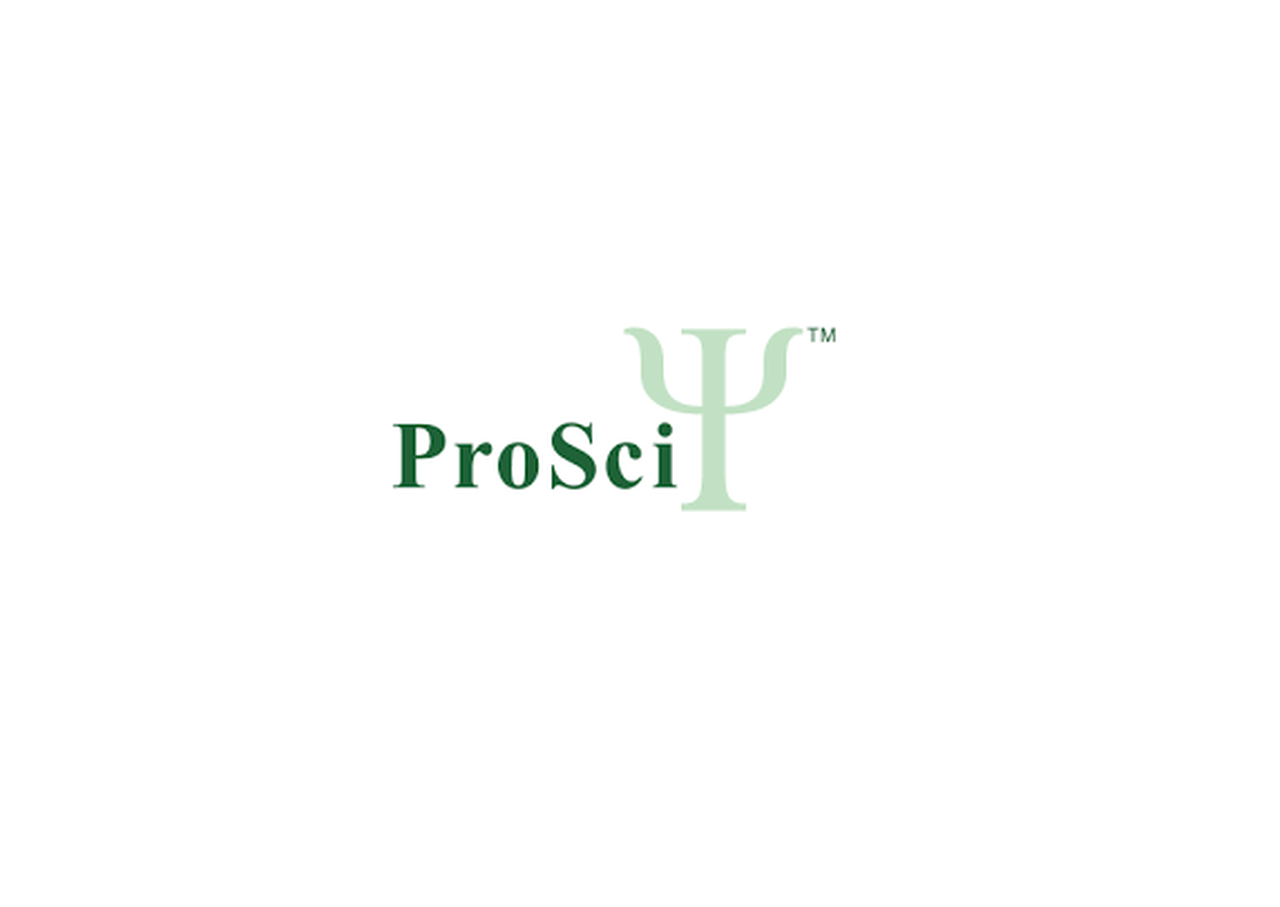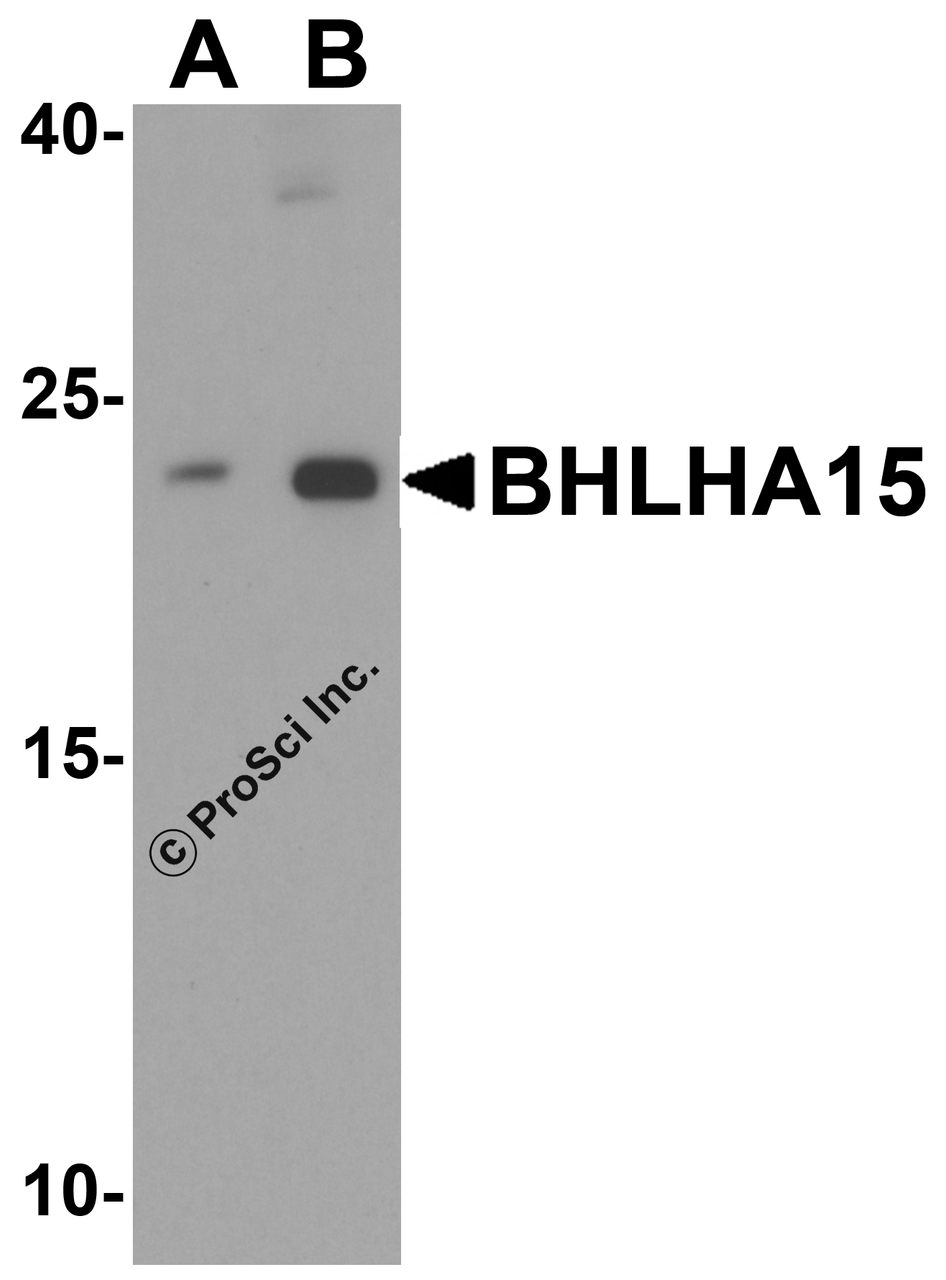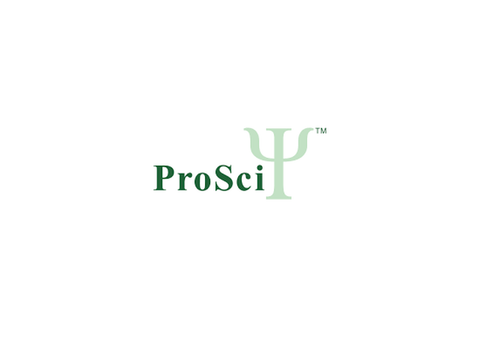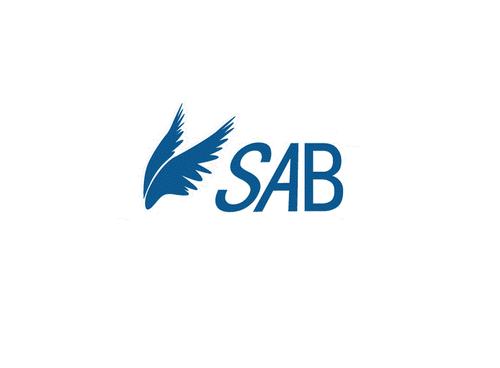Product Description
BHLHA15 Antibody | 8541 | ProSci
Host: Rabbit
Reactivity: Human, Mouse, Rat
Homology: N/A
Immunogen: BHLHA15 antibody was raised against a peptide corresponding to 17 amino acids near the carboxy terminus of human BHLHA15.
Research Area: Signal Transduction, Stem Cell
Tested Application: E, WB
Application: BHLHA15 antibody can be used for Western blot at 1 - 2 μg/mL.
Antibody validated: Western Blot in mouse samples. All other applications and species not yet tested.
Specificiy: N/A
Positive Control 1: Cat. No. 1282 - 3T3 (NIH) Cell Lysate
Positive Control 2: N/A
Positive Control 3: N/A
Positive Control 4: N/A
Positive Control 5: N/A
Positive Control 6: N/A
Molecular Weight: Predicted: 21 kDa
Observed: 22 kDa
Validation: N/A
Isoform: N/A
Purification: BHLHA15 Antibody is affinity chromatography purified via peptide column.
Clonality: Polyclonal
Clone: N/A
Isotype: IgG
Conjugate: Unconjugated
Physical State: Liquid
Buffer: BHLHA15 Antibody is supplied in PBS containing 0.02% sodium azide.
Concentration: 1 mg/mL
Storage Condition: BHLHA15 antibody can be stored at 4˚C for three months and -20˚C, stable for up to one year. As with all antibodies care should be taken to avoid repeated freeze thaw cycles. Antibodies should not be exposed to prolonged high temperatures.
Alternate Name: BHLHA15 Antibody: FB22, HM89, LAP3, LCR1, NPYR, WHIM, CD184, LESTR, NPY3R, NPYRL, HSY3RR, NPYY3R, D2S201E
User Note: Optimal dilutions for each application to be determined by the researcher.
BACKGROUND: BHLHA15 Antibody: BHLHA15 (basic helix-loop-helix protein 15) , also known as MIST1 (muscle intestine and stomach expression 1) belongs to the bHLH family of transcription factors and plays a role in regulating the transcriptional activity of MYOD1 in muscle cell development as well as serving as a key regulator of acinar cell function (1, 2) . BHLHA15 contains a basic helix-loop-helix (bHLH) domain and is capable of binding to E-box motifs as a homodimer or a heterodimer with E-proteins. It may also negatively regulate bHLH-mediated transcription through a N-terminal repressor domain (3) . It is expressed in mammary epithelial cells and is essential for the regulation of mammary gland development (4) .
 Euro
Euro
 USD
USD
 British Pound
British Pound
 NULL
NULL










